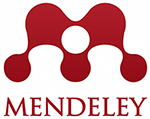Health status of institutionalized older adults in the city of Cuenca
DOI:
https://doi.org/10.26871/killcanasalud.v4i4.753Abstract
Objective: To determine the health status of institutionalized older adults in the Miguel de León nursing home in the City of Cuenca. Materials and Methods: quantitative study of descriptive scope with retrospective temporality, the sample consisted of 44 institutionalized older adults, the information was obtained by reviewing medical records, where sociodemographic data, blood values such as: hemogram, (neutrophils, white blood cells, red blood cells, lymphocytes, monocytes, lipid profile (cholesterol, triglycerides, HDL cholesterol, LDL cholesterol, glycemia) as well as nutritional status. The study variables were collected through a data collection sheet constructed by the authors and validated in the opinion of experts. Results: in the socio-demographic data it was determined that, of the total population, 47.7% belong to the age range between 75 and 90 years; in a predominance of the female sex with 54.54 %, regarding socioeconomic level, 34.09% are of low economic resources, and regarding marital status, 56.81% are widowers, regarding status It was found that 9.10%, older adults are at risk of malnutrition, 22.72% presented malnutrition and 68.18% were in normal nutritional state, the lipid profile is observed that 38, 6% are high in what is cholesterol. Conclusions: the health status of the elderly is affected mainly by diseases such as diabetes and high cholesterol, of the elderly they are within the normal range with 61.4%, and 38.6% are high.
Downloads
References
Alvarado García AM, Salazar Maya ÁM. Aging concept analysis [Internet]. Vol. 25, Gerokomos. Spanish Publishers Associate; 2014 [citado el 4 de febrero de 2021]. p. 57–62. Disponible en: http://scielo.isciii.es/scielo.php?script=sci_arttext&pid=S1134-928X2014000200002&lng=es&nrm=iso&tlng=es
Martínez Pérez T, González Aragón C, Castellón León G, González Aguiar B. El envejecimiento, la vejez y la calidad de vida: ¿éxito o dificultad? Rev Finlay [Internet]. 2018 [citado el 4 de febrero de 2021];8(1):59–65. Disponible en: http://scielo.sld.cu/scielo.php?script=sci_arttext&pid=S2221-24342018000100007
M RR. Valoración de factores biopsicosociales determinantes del riesgo de desnutrición en los adultos mayores en hogares de ancianos (Tesis). An la Fac Ciencias Médicas. 2015;48(2):17–32.
Tafur Castillo J, Guerra Ramírez M, Carbonell A, Ghisays López M. Factores que afectan el estado nutricional del adulto mayor. Latinoam Hipertens [Internet]. 2018;13(5). Disponible en: http://www.revhipertension.com/rlh_5_2018/factores_que_afectan_el_estado.pdf
Cuerda C, Álvarez J, Ramos P, Abánades JC, García-De-lorenzo A, Gil P, et al. Prevalence of malnutrition in subjects over 65 years of age in the community of Madrid. The DREAM + 65 study. Nutr Hosp. 2016;33(2):263–9.
Cordero R, Fontanillo P. Health status of the elderly. Current situation.
Musso AM. Anemia en el adulto mayor. Acta Bioquim Clin Latinoam [Internet]. 2017;51(3):319–24. Disponible en: https://www.redalyc.org/pdf/535/53553013006.pdf
Alvarado-García A, Lamprea-Reyes L, Murcia-Tabares K. La nutrición en el adulto mayor: una oportunidad para el cuidado de enfermería. Enfermería Univ. 2017;14(3):199–206.
Barrios JC, Torres AC, Vélez YF, Castellanos LB, Labrada PG, Hernández EM. Alimentación no saludable-sedentarismo-estrés asociados con HTA e IAM: Reporte de casos. FACSALUD-UNEMI [Internet]. el 15 de diciembre de 2020 [citado el 4 de febrero de 2021];4(7):3–10. Disponible en: http://ojs.unemi.edu.ec/index.php/facsalud-unemi/article/view/1160
Nestle Nutrition Institude. What is the MNA®? 2020;1–3.
Morros-González E, Borda MG, Reyes-Ortiz C, Chavarro-Carvajal D, Cano-Gutierrez C. Anciano con Diabetes y factores asociados. Acta Médica Colomb. 2017;42(4):230–6.
Loredo-Silva MT. Estado de salud de la población universitaria. Salud Publica Mex. 2015;19(6):867–92.
Faisant C, Lauque S GY. Valoración Nutricional Del Adulto Mayor. Parte I Módulos Valoración Clínica. 2009;12.
Ferreira Lopes JD, Guimarães Oliveira Soares MJ, Lidiane Jácome de Lima C, Maynnard Costa Ferreira T, Simplício de Oliveira P, Alves da Silva M. Evaluación nutricional por el Mini Nutritional Assessment: una herramienta para las enfermeras TT - Avaliação nutricional pela Mini avaliação Nutricional: uma ferramenta para o enfermeiro TT - Nutritional assessment by the Mini-Nutritional Assessment: a. Enferm glob. 2018;17(51):267–305.









